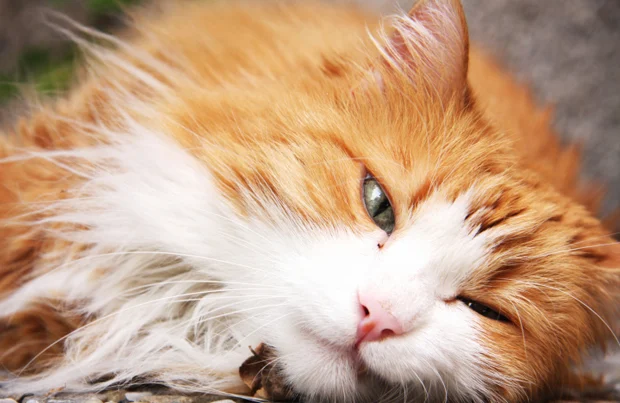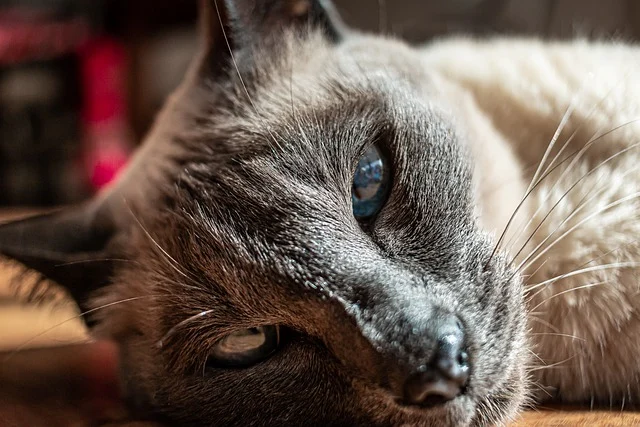When a cat has vestibular disease, he or she may experience a Loss Of Balance In Cat. When the vestibular apparatus in the inner ear is disrupted by disease or injury, it causes a loss of balance. Your cat’s balance and coordination are controlled by the vestibular apparatus. Vestibular disease can have a variety of causes, but it’s usually classified as idiopathic because the cause isn’t always obvious without extensive testing.
It’s also called ataxia, which refers to a loss of balance affecting your cat’s head, limbs, and/or torso. Ataxia is caused by the nervous system’s decreased sensory function, which can be caused by a variety of diseases.
Ataxia is caused by a loss of sensory function in the nervous system, which can be caused by a variety of diseases and can be divided into three categories.

Cerebellar: The cerebellum is a part of the brain that aids in the control of fine motor movement and strength. Uncoordinated movement of the limbs, torso, and head is a symptom of cerebellar ataxia.
- Proprioceptive: The most common cause of sensory ataxia is spinal cord lesions, particularly spinal cord compression.
- Vestibular: Because affected cats can’t get their bearings, they tend to tilt their heads, lean forward, fall, and roll. Cats with central vestibular ataxia, affect the brain stem.
Table of Contents
Causes of Loss Of Balance In Cat
- Inflammatory/immune-mediated causes
- Infection
- Toxicity
- Infection of the middle or inner ear
- Metabolic
- Cancer
- Trauma
- Idiopathic vestibular disease
- Degeneration of the spinal cords and nerves over time
- Loss of blood flow to an area of the spinal cord
- Birth defects resulting in a malformed spine or vertebrae
- Compression/damage to the spinal cord
- A common cause of ataxia was thiamine deficiency.
Symptoms of Ataxia in Cats
Cats who become ataxic suddenly often flip or drop to one side and experience severe nausea as a result of their unsteadiness. More delicate symptoms, such as a mild head tilt or curling under the toes while walking, may be present. The following symptoms may be displayed by a cat suffering from loss of balance:

- Difficulty standing
- Falling down
- Stumbling while walking
- Head tilting to one side
- Moving in circles
- Rolling on the floor
- Weakness of limbs
- Constant eye movements
- Painful vocalizations
- Difficulty hearing
Diagnosis of Ataxia
A physical exam is usually performed to assess your cat’s overall health. This includes a neurologic examination as well as an otoscopic examination. Your veterinarian may perform a series of tests to rule out other conditions or look for an underlying cause of your cat’s loss of balance.
To rule out diseases that could cause a loss of balance, your veterinarian may order blood tests, urine tests, and ear cultures. An MRI, spinal tap and head x-rays may be required to rule out any harm or infections that may have caused the problem.
Treatment

The type of treatment depends on the cause of the ataxia. Idiopathic ataxia may go away on its own and not come back. Idiopathic ataxia, which has no known cause, is treated with supportive therapy such as anti-nausea medications, and the cat should really be kept in a safe, added comfort environment where it cannot hurt itself while exhibiting symptoms. If your cat isn’t eating or drinking well, you may need to use assisted feed intake and IV fluids.
Cats who have been affected since birth may not require treatment because their lack of coordination and balance has developed over time. An ear infection, tumor, or toxic exposure can all cause a loss of balance. If this is the case, your veterinarian will treat the condition’s underlying cause. Antibiotics may be prescribed by your veterinarian to treat an infection or drug toxicity. If caught early, the underlying cause may be treatable, and the idiopathic vestibular disease usually goes away in a short time.




